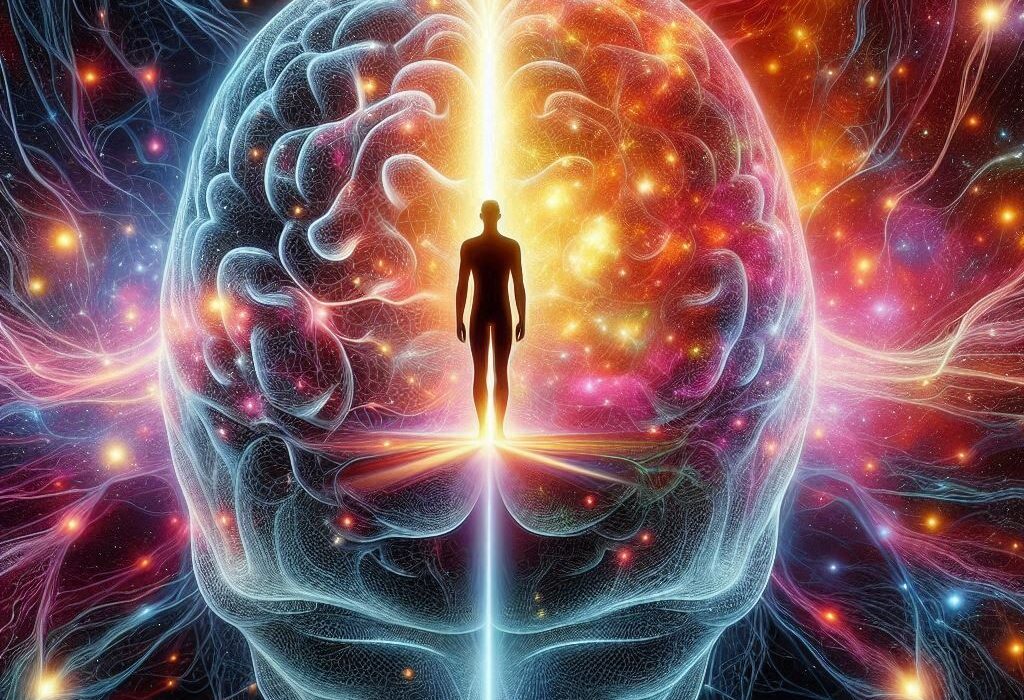You wake up and reach for your phone before your eyes are fully open. Do you scroll through notifications or check the weather first? You choose to have toast instead of eggs, wear the blue shirt instead of the white one, and take the longer but quieter route to work. You answer one email right away but save the others for later. You smile at the barista. You buy a muffin. You decide not to call your mother—maybe later.
Each of these choices feels small, even forgettable. But behind every one is a hidden orchestra of mental processes: split-second judgments, emotional echoes, past experiences, and future predictions, all coming together to create what looks and feels like free will.
In the theater of our minds, we like to believe we are the sole director. But psychology tells a more fascinating—and more humbling—story. Our everyday decisions are not just the products of conscious thought. They are shaped, influenced, and sometimes hijacked by hidden forces beneath the surface.
The Myth of Rational Choice
For centuries, philosophers and economists assumed that human beings make decisions rationally. That is, we weigh the pros and cons, calculate the risks, and choose what benefits us the most. This idea gave birth to the concept of “homo economicus”—the purely rational actor.
But modern psychology dismantled this myth with elegance and evidence. In the 1970s, groundbreaking research by Daniel Kahneman and Amos Tversky revealed that humans are not so much rational as predictably irrational. Their work launched the field of behavioral economics and introduced the world to a variety of mental shortcuts and biases that steer our decisions in surprising directions.
We don’t calculate—we approximate. We don’t analyze—we feel. We don’t always seek truth—we seek comfort, or speed, or familiarity.
Take something as simple as choosing what to eat for lunch. You might believe you’re picking based on hunger or nutrition. But studies show that the last image you saw, the smell in the hallway, or even the mood you woke up in can override your best intentions. You might reach for a salad—or a burger—based less on conscious logic and more on subtle, subconscious cues.
Fast and Slow Thinking
One of the most influential ideas in decision science comes from Kahneman’s book Thinking, Fast and Slow, where he describes two systems of thought. They’re not literal brain parts, but rather metaphors for how we process information.
System 1 is fast, automatic, emotional. It’s what helps you recognize a friend’s face instantly, or flinch at a loud sound. It’s always on, scanning, reacting, jumping to conclusions.
System 2 is slower, more deliberate, logical. It kicks in when you solve a math problem or plan a strategy. It requires effort and attention.
Most of your everyday decisions? They’re made by System 1.
That’s not a design flaw—it’s efficiency. If we had to carefully analyze every micro-choice, we’d never get out of bed. But this efficiency comes at a cost: bias, error, and irrationality. System 1 loves stories more than statistics. It falls for stereotypes. It overweights recent experiences. And because System 2 is lazy, it often rubber-stamps System 1’s decisions.
This inner dynamic plays out every time you choose a route, pick a playlist, or decide whether or not to speak your mind.
The Role of Emotion: The Silent Guide
We like to believe our decisions are logical. But neuroscience paints a more emotionally rich picture.
In the 1990s, neuroscientist Antonio Damasio studied patients with damage to the parts of the brain responsible for emotion. These individuals still had high IQs and could reason just fine. But they struggled to make even basic decisions—what to wear, what to eat, how to plan their day. They were caught in endless analysis, unable to choose.
What Damasio discovered was profound: emotion is not the enemy of reason—it’s the foundation of it.
Your feelings give weight to options. They mark certain possibilities as desirable or dangerous. Without that emotional coloring, choices become paralyzing.
This is why marketers don’t sell features—they sell feelings. A car isn’t just a car; it’s freedom, prestige, or safety. That fragrance isn’t just a scent—it’s confidence, seduction, or memory.
Even in moments that seem purely logical—like buying insurance or voting in an election—emotions whisper their influence. Anxiety, hope, pride, regret. They all tug at the steering wheel.
Cognitive Biases: The Shortcuts That Shape Us
The human brain is constantly simplifying the world so we can navigate it. But those simplifications often come with hidden traps.
For example, the confirmation bias nudges you to favor information that supports what you already believe, and to dismiss what doesn’t. This affects what you read, who you listen to, and even how you interpret new experiences.
The anchoring effect tricks you into relying too heavily on the first piece of information you hear. If the first sweater you see costs $300, the $100 one next to it suddenly feels like a bargain—even if it’s still overpriced.
The availability heuristic makes you overestimate the likelihood of events that come easily to mind. If you just read about a plane crash, flying might seem riskier—despite statistics showing it’s still safer than driving.
These are just a few of the dozens of cognitive biases quietly guiding your everyday decisions—from tipping waiters to judging strangers to deciding what to believe.
The Influence of Habit: Decisions on Autopilot
At least 40% of your daily decisions aren’t decisions at all—they’re habits. Automatic routines embedded so deeply you don’t even think about them. The route you take to work. The way you tie your shoes. The order you wash your body in the shower.
Habits are the brain’s way of conserving energy. They’re efficient, reliable, and hard to break.
Neuroscientists have identified a loop in the brain that governs habits: cue → routine → reward. The cue is a trigger (like the sound of your alarm). The routine is the behavior (getting coffee). The reward is what your brain enjoys (caffeine boost, comfort).
Understanding this loop is key to changing bad habits—or creating good ones. Because the truth is, many of your so-called “choices” are just well-worn grooves your brain slides into.
The Social Shadow: How Others Shape Your Choices
Humans are social creatures. And whether you realize it or not, the presence of others deeply influences your decisions.
You’re more likely to choose a menu item if someone else at your table orders it. You’re more likely to tip more generously if you see others doing so. You might even change your opinion on a movie or politician after hearing the reactions of your friends.
Psychologists call this social proof—the idea that people look to others to decide what’s acceptable or valuable. It’s one reason online reviews and likes are so powerful. We don’t just want to make good decisions—we want to make decisions that feel safe, approved, and aligned with our tribe.
This influence is even more subtle in moments of ambiguity. When you’re unsure what to do, you scan the room—physically or metaphorically. You calibrate your choices by the social atmosphere. This keeps communities cohesive, but it also makes us vulnerable to herd behavior and groupthink.
The Role of Identity: Who You Think You Are
One of the most powerful—and invisible—forces behind your decisions is your identity.
You don’t just decide based on what’s useful. You decide based on who you believe you are.
If you see yourself as a healthy person, you’ll feel tension before eating fast food. If you see yourself as adventurous, you’ll lean toward the unfamiliar. If you think of yourself as a “morning person,” you might rise earlier even when tired.
Identity is not fixed—it’s a narrative. And that narrative guides thousands of micro-decisions. It’s also why personal change is so difficult: changing a habit means changing the story you tell yourself about who you are.
Marketers, educators, and leaders all tap into this principle. The most effective messages don’t just say “Do this.” They say “Be this.” Because once your choices align with your self-image, they feel inevitable.
Decision Fatigue: When the Mind Gets Tired
Ever wonder why you’re more likely to make impulsive purchases at night? Or eat junk food after a long day?
It’s not lack of willpower—it’s decision fatigue.
Every decision you make—no matter how small—drains a little bit of your mental energy. Over time, your ability to weigh options and resist temptation diminishes. That’s why judges tend to give harsher sentences later in the day. Or why you might abandon your shopping cart after too many choices.
This insight has led to practical advice: automate simple decisions. Wear the same outfit. Eat the same breakfast. Save your brainpower for the choices that really matter.
Intuition: The Wisdom Beneath Awareness
Intuition often gets dismissed as vague or unscientific. But researchers have found that gut feelings are real—and often reliable.
Intuition is not magic. It’s experience distilled into rapid recognition.
When a firefighter senses a floor might collapse, or a chess master makes a brilliant move in seconds, they’re not guessing. Their brains have seen thousands of patterns before, and they’re recognizing familiar signals below the level of conscious awareness.
In everyday life, your intuition helps you judge people, read rooms, or sense that something is “off.” It’s a valuable ally—but only if it’s trained.
Intuition becomes smarter with feedback, reflection, and experience. Blind trust in it, however, can lead you astray—especially in unfamiliar or emotionally charged situations.
The Hidden Future: Predictive Brains
One of the brain’s most amazing features is its ability to simulate the future. When you’re deciding whether to take a job, text someone, or try a new recipe, your brain runs little mental movies of what might happen.
This process is called prospection, and it’s central to decision-making.
But the catch is: those simulations are often flawed. We overestimate how long happiness or sadness will last. We imagine future events with too much confidence. We neglect how we’ll adapt.
Understanding this helps us forgive ourselves—and plan better. The brain tries to predict what will feel good or bad, but it’s often wrong. That’s why sometimes, what you thought would be a great decision ends up disappointing—and vice versa.
Conclusion: The Freedom in Knowing
The psychology behind everyday decisions is not just about quirks and errors. It’s about humanness.
Your brain is not a calculator—it’s a storyteller, a pattern-seeker, a survival machine. It filters reality, balances emotion, scans the social horizon, recalls the past, and projects the future—all in the blink of a thought.
Knowing the forces that shape your choices doesn’t take away your freedom. In fact, it enhances it. Because awareness creates space. Space to pause. To question. To choose differently.
The next time you reach for that muffin, skip a call, smile at a stranger, or say yes when you meant no—pause. Ask: What’s really guiding me right now?
Sometimes it will be emotion. Sometimes identity. Sometimes fatigue, memory, or instinct.
And sometimes, beautifully, it will be clarity.
Because once you understand the hidden psychology behind everyday decisions, you don’t just live—you live on purpose.






